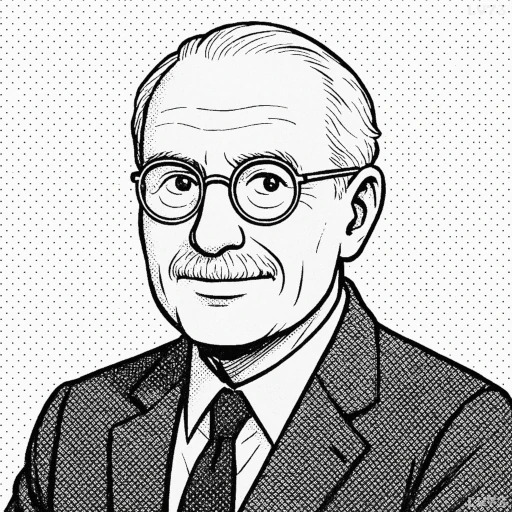“Often the hands will solve a mystery that the intellect has struggled with in vain.”

- July 26, 1875 – June 6, 1961
- Born in Switzerland
- Psychiatrist and psychologist
table of contents
Quote
“Often the hands will solve a mystery that the intellect has struggled with in vain.”
Explanation
In this quote, Carl Jung suggests that there are times when intellectual reasoning and cognitive effort are insufficient to solve a problem or understand a mystery, and instead, physical action—symbolized here by the “hands”—can provide insight or clarity. Jung highlights the connection between mind and body, emphasizing that physical engagement with a problem, whether through hands-on work or creative expression, can lead to solutions that the intellect alone may not reach. This reflects a key theme in Jung’s work: the importance of the unconscious mind and embodied experience in problem-solving and personal insight. While the intellect operates in the realm of logic and analysis, the hands represent a more instinctive, creative, and non-verbal form of understanding.
Historically, Jung’s idea connects to his broader theories about the integration of the conscious and unconscious. He believed that the unconscious mind communicates through symbols, dreams, and often through the body, which can bypass the conscious mind’s rigid, logical structures. Engaging the hands—whether in craft, art, or other forms of manual work—can help access deeper, unconscious knowledge and facilitate problem-solving in ways that are not always immediately accessible through intellectual effort alone. For instance, art therapy or creative expression has long been used as a tool for psychological insight, where the process of creating something physical often leads to emotional breakthroughs or new ways of understanding a situation.
In contemporary terms, Jung’s quote can be applied to the concept of embodied cognition, which posits that our thinking is deeply influenced by our physical bodies and actions. Many modern innovative thinkers and creators find that stepping away from abstract theorizing and engaging in hands-on activities—such as drawing, building, or playing a musical instrument—often leads to breakthroughs. For example, many scientists, artists, and writers report moments of insight occurring while they are engaging in physical tasks or manual labor, allowing the mind to relax and open up to new ideas. Jung’s quote serves as a reminder that sometimes the most profound solutions emerge not from rigorous intellectual work, but from trusting the body’s ability to express and solve mysteries that the mind alone cannot grasp.
Would you like to share your impressions or related stories about this quote in the comments section?
